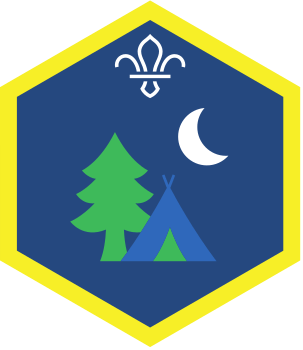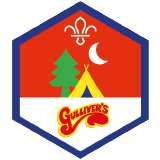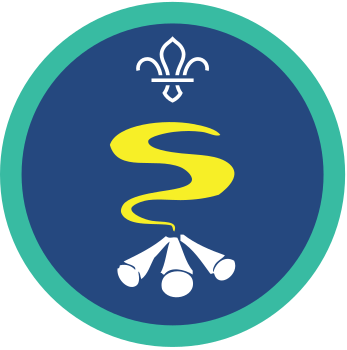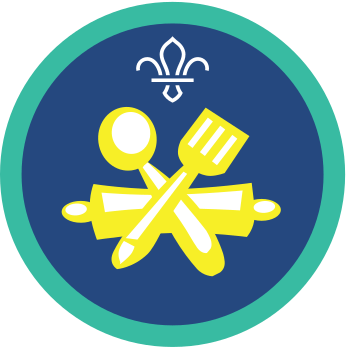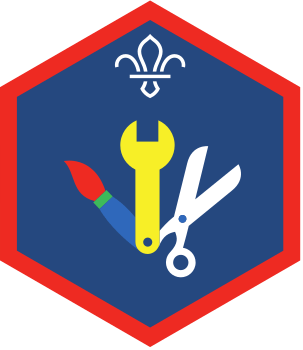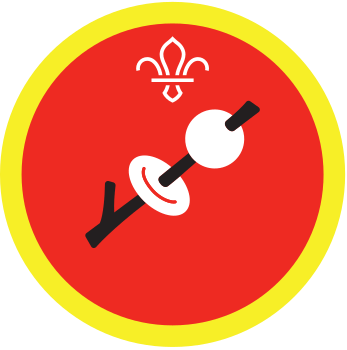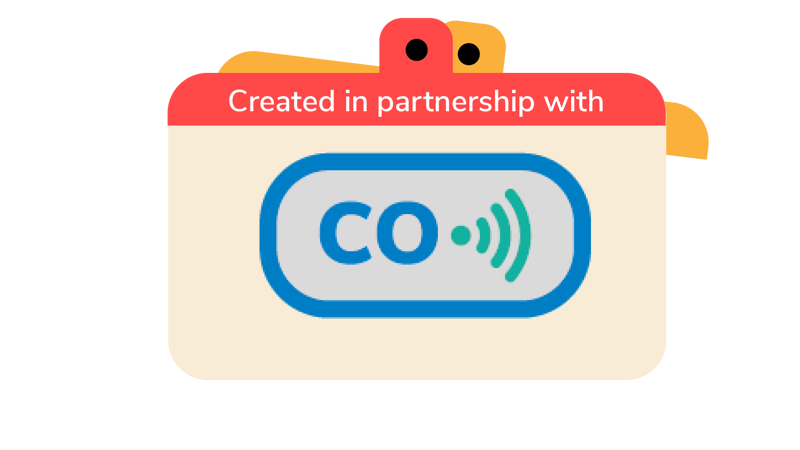
Chunky minestrone soup
You’ll need
- Chopping boards
- Knives
- Wooden spoons
- Access to water
- Ingredients (see recipe card)
- Gas stove or open fire
- Dutch oven (or equivalent fireproof casserole dish with lid) for an open fire
- Wide, deep saucepan or soup pan for a gas stove
- Heatproof gloves
- Bucket of water and/or sand
- First aid kit for burns
- Can opener
- Garlic press or alternative
- Ladle
- Bowls
- Cutlery
- Carbon monoxide alarm
Before you begin
- Use the safety checklist to help you plan and risk assess your activity. Additional help to carry out your risk assessment, including examples can be found here. Don’t forget to make sure all young people and adults involved in the activity know how to take part safely.
- Make sure you’ll have enough adult helpers. You may need some parents and carers to help if you’re short on helpers.
Building a fire and preparing to cook on a campfire
- Build and light a fire before starting this activity. Our activities, Campfire admirers or Construct a campfire, can help you to do this. You’ll use the hot embers to cook on, so the fire will need enough time to die down before cooking.
- You could run our fire safety activities, Fuel air ignition and Sitting safely by a campfire, prior to running this session.
- Remember to have a hand washing station and take extra hygiene precautions when handling raw meat, such as regular hand washing, having separate equipment for raw and cooked meat, and washing up equipment as soon as it's been used. Take a look at our guidance on food preparation.
- Make sure you have all the ingredients ready.
- Remember to check your ingredients against any allergy or dietary requirements to ensure everyone can enjoy the recipe. This may mean using alternative ingredients.
Using a kitchen and preparing to cook
- You could run our kitchen safety and hygiene activities, Kitchen risk bingo and Home kitchen hygiene prior to running this session.
- Remember to have a hand washing station and take extra hygiene precautions when handling raw meat, such as regular hand washing, having separate equipment for raw and cooked meat, and washing up equipment as soon as it's been used. Take a look at our guidance on food preparation.
- Make sure you have all the ingredients ready.
- Remember to check your ingredients against any allergy or dietary requirements to ensure everyone can enjoy the recipe. This may mean using alternative ingredients.
Having a safe cooking source
- Make sure that everyone’s fires have been built outdoors in clear and open areas with plenty of ventilation away from where people sleep. All the fires need to burn down to hot embers before they can start cooking. This increases the chance of the fuel burning without enough oxygen present, increasing the risk of carbon monoxide exposure. We’ve more guidance on different cooking methods.
- If using a gas stove, make sure it’s on a stable heatproof surface, and in a clear and open area with plenty of ventilation.
- In addition to these safety measures, bring along a carbon monoxide alarm to keep everyone safe.
Consider using this script to teach young people about carbon monoxide and how to keep themselves safe when burning fuel.
Does anyone know the three things we need to ignite or sustain a fire?
We need oxygen, a heat source (this can be a match, lighter, electricity or flint and steel) and fuel (this can be wood, gas, or solid fuel). This is known as the fire, or combustion triangle. When these three things come together, a chemical reaction happens and that is how we get fire.
What would happen if we removed the heat source from this triangle?
With just oxygen and fuel, nothing would happen.
What would happen if we removed the fuel from this triangle?
With just oxygen and a heat source, nothing would happen.
What would happen if we removed the oxygen from this triangle?
When there is not enough oxygen available for the fuel to burn fully when introduced to a heat source, carbon monoxide is released.
Does anyone know what carbon monoxide looks like?
It is actually colourless, odourless and tasteless – so we can’t sense it at all.
How do you know if you, or someone else might have carbon monoxide poisoning?
The symptoms of carbon monoxide poisoning might be confused with ‘flu-like’ symptoms. This could be headaches, dizziness, feeling weak, vomiting, chest pain, and confusion.
Safe or unsafe?
Gather everyone together and explain that you will be reading out statements. It is up to your young people to decide if the statements are safe or unsafe. They can do this by a show of hands, or marking areas on the floor for people to stand in. Make sure you play this away from any fires, in a safe area.
Our troops gas stoves haven't been serviced or cleaned properly in a long time. We bought new stoves for the trip and have set the old ones aside to be serviced or disposed of.
SAFE – Don't leave known faulty equipment to chance. Ensure that all equipment is maintained in accordance with the manufacturer's instructions and visually checked before each use. Signs to look out for are lots of black soot and a yellow flame that is droopy and lazy.
We have a carbon monoxide alarm, so we don’t need to worry about the risk of being poisoned.
UNSAFE - A Carbon Monoxide alarm detects the presence of the gas in the air, however should be used as an extra precaution in addition to making sure you are cooking in a well ventilated area.
Chunky minestrone soup
Ingredients:
- Cooking oil
- 1 onion
- 2 garlic cloves
- 3 large carrots
- 4 sticks of celery
- 2 cans of chopped tomatoes
- 2 tbs tomato puree
- 1 litre hot veg stock
- 250 g spaghetti
Prep time: 10 – 15 minutes
Cook time: 30 – 40 minutes
Serves: 4
- An adult should always be assigned to and supervising each group during this activity.
- Clean and prepare your ingredients. Peel and chop the onion and carrots.
- Slice the celery into small pieces, then peel and crush the garlic.
- Break the spaghetti into short lengths.
- Now add the vegetables to the pan you’re using, with a small amount of cooking oil, and fry for 5 minutes or until the vegetables start to soften. You could a fork to test how soft the vegetables are.
- Then open and add in the chopped tomatoes, stock and tomato puree. Cover the pan you’re using with a lid and simmer for 10 minutes, stirring occasionally.
- Add in the spaghetti and cook for a further 10 minutes or until the pasta’s soft.
- After ten minutes, an adult volunteer should carefully remove the Dutch Oven or pan from the heat, while wearing the heatproof gloves. They should then place it down on a heatproof surface (away from young people), carefully remove the lid and use a fork to check that the vegetables and pasta have cooked nicely. If the fork goes into them with ease, it’s ready.
- If using a gas stove or similar turn the cooking source off. If using an open fire, make sure it’s safely and sufficiently supervised, and the site should not be left until the fire’s completely out.
- Put the Dutch Oven or pan on a heatproof surface, away from young people, and wait for the soup to cool down.
- When ready, with an adult’s help, use a ladle to put it in bowls.
- Season to taste and serve with some crusty bread. You can allow a bit of time for it to cool slightly before you tuck in.
Reflection
This activity was an opportunity to spend some time in the great outdoors, while working together to create a meal to share. How did it feel to cook outdoors and on a fire? How’s it different to using modern methods? Did you work well together and how did you promote teamwork?
We used traditional vegetables in this soup, what else could we have added? Would it still be a minestrone soup if we changed the ingredients?
Everyone needed to be responsible and safe around the fire. There are lots of risks and hazards that we must be mindful of when enjoying our fire and using it for cooking. Can anyone remember them?
Can anyone spot the different ways we’ve tried to keep everyone safe? Has anyone heard of carbon monoxide? What have we done today to make sure we don't suffer from carbon monoxide exposure?
Safety
All activities must be safely managed. You must complete a thorough risk assessment and take appropriate steps to reduce risk. Use the safety checklist to help you plan and risk assess your activity. Always get approval for the activity, and have suitable supervision and an InTouch process.
- Cooking
Teach young people how to use cooking equipment safely. Supervise them appropriately throughout. Make sure it’s safe to use and follow manufacturers’ guidelines for use.
- Fires and stoves
Make sure anyone using fires and stoves is doing so safely. Check that the equipment and area are suitable and have plenty of ventilation. Follow the gas safety guidance. Have a safe way to extinguish the fire in an emergency.
- Food
Remember to check for allergies, eating problems, fasting or dietary requirements and adjust the recipe as needed. Make sure you’ve suitable areas for storing and preparing food and avoid cross contamination of different foods. Take a look at our guidance on food safety and hygiene.
- Flammable items
Always take care when using flammable items, especially if you’re near fire. Always follow the manufacturer’s instructions and guidelines.
- Visits away from your meeting place
Complete a thorough risk assessment and include hazards, such as roads, woodland, plants, animals, and bodies of water (for example, rivers, ponds, lakes, and seas). You’ll probably need more adult helpers than usual. Your risk assessment should include how many adults you need. The young people to adult ratios are a minimum requirement. When you do your risk assessment, you might decide that you need more adults than the ratio specifies. Think about extra equipment that you may need to take with you, such as high visibility clothing, a first aid kit, water, and waterproofs. Throughout the activity, watch out for changes in the weather and do regular headcounts.
To decrease the level of the challenge, you may want to build the fires for your young people in advance.
You could peel and chop the ingredients before the session, or have the group involved in all stages of the process.
There are lots of different jobs that need doing when planning, making and cooking on a campfire. There’s a role for everyone, so encourage everyone to be involved in a way that works for them.
If anyone finds chopping things more difficult, think about pairing them up with another young person, young leader or adult to help them. They might also be able to do another task, such as stirring or washing up.
Remember to check your ingredients against any allergy or dietary requirements to ensure everyone can enjoy the dish. This recipe can easily be adapted.
Don’t forget to check the type of stock you’re using, as this can contain allergens. Remember to check any side dishes you’re having, too. For example, did you know that couscous contains gluten?
All Scout activities should be inclusive and accessible.
If you enjoyed this activity, you could try making some more recipes or using different cooking methods. We’ve lots more recipes to inspire you.
Everyone was reminded of the dangers of carbon monoxide poisoning at the start of this activity. Consider combining this with some other activities on carbon monoxide safety.
Young people could adapt the recipe, adding or replacing ingredients, and deciding how they’re going to work together to make the meal.
Make sure your young people are given appropriate space to learn how to cook using a Dutch oven.
